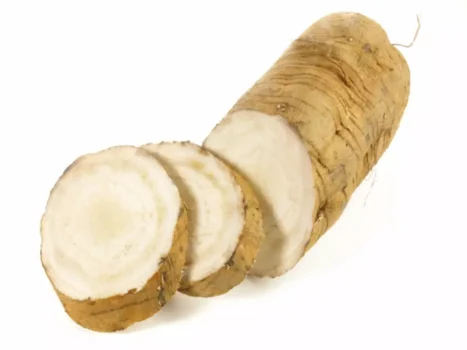
Funding for this study was in part provided by the Andre-Leysen-Ulran-Foundation, Belgium (W.H.O.), the ParkinsonFonds, Deutschland (W.H.O. and A.J.) and Stichting ParkinsonFonds, The Netherlands (K.L. and S.K.M.) and the JPB Foundation (D.J.S.). W.H.O. is Hertie Senior Research Professor supported by the Charitable Hertie-Foundation, Frankfurt/Main, Germany. The authors are very grateful to the two individuals https://ecosoberhouse.com/ suffering from iRBD who agreed to participate in this study under “individual case of off-label use rules”. The expert support in olfactory function testing by Christine Höft, Marburg, and the expert support in analyzing the FDG-PET data by Anna Dortmond, Groningen, are highly appreciated. The authors thank Mrs. Taylor Fields, IntraBio Ltd., London, United Kingdom for a critical review of the manuscript.
Activities That Release Dopamine
- It must be acknowledged that PET/SPECT is somewhat limited as a technique because of its radioactivity meaning that young people and repeat scanning cannot be carried out.
- During the 8-year course of the study, 4 iRBD patients converted to manifest Parkinson’s disease (PD), 1 to manifest Dementia with Lewy bodies (DLB) and 7 remained in the prodromal stage iRBD and were thus defined as “non-converters”.
- Even though we aren’t directly addicted to dopamine itself, we may be addicted to an activity in part because of the dopamine it releases in our brains.
- Recently, in an experimental mouse model of prodromal PD, we studied the effect of preformed fibrils of alpha-synuclein—locally applied—on neurons in the PD-vulnerable structures substantia nigra (SN) and pedunculopontine nucleus (PPN).
- Patient 2 (male) had a subjective 3-week RBD-severity sum-score (RBD-SS-3) of 7 before a treatment effect was observed, and thus was less severely affected by RBD symptoms than patient 1 (Fig. 1b).
A dopamine hit brings about pleasure, and then is quickly followed by pain, or a come-down, in order to keep us motivated. Lembke says this balancing see-saw of pleasure and pain made sense in the time of early humans, when we had to constantly search for our basic needs – food, water, shelter. “It’s really an ingenious method to make sure that no matter what we do, that’s pleasurable. It doesn’t last very long and it’s followed by pain so that immediately we’re searching again,” she explains. When we’re repeatedly exposed to pleasure-producing stimuli — social media, sugar, alcohol or any number of readily-available substances — our bodies adjust.
What to Do If Things Get Out of Control

This makes alcohol and endotoxins more likely to cross the lining of the gut and travel via the circulation to the liver. Further alcohol metabolism and increases in bacteria cause the liver to produce inflammatory alcohol and dopamine factors such as pro-inflammatory cytokines [81]. This cumulatively increases levels of circulating pro-inflammatory cytokines which can cross the blood brain barrier (BBB) and cause inflammation in the brain [82].
- Improving the outcomes of treatment and prevention initiatives requires a better understanding of the biological mechanisms that underpin addiction.
- Want to keep the effects of alcohol to a minimum without cutting it out completely?
- The daily dosage of ADLL in previous clinical studies for other indications was 5 g/day (2 g in the morning, 1.5 g at noon and 1.5 g at night)6,9,10.
- Serotonin is another neurotransmitter that is affected by many of the drugs of abuse, including cocaine, amphetamines, LSD and alcohol.
- Alcohol-related functional differences in the brain are not exclusively observed in dependent individuals.
Dopamine D2/3 autoreceptor sensitivity was decreased in chronic alcohol self-administering male macaques

The hypothesis that atypical antipsychotics may decrease alcohol intake are supported by two separate studies with risperidone and olanzapine in high‐alcohol‐preferring rats [154, 155]. Neither compound had an effect on maintenance of chronic alcohol drinking [157], which is in line with a study showing that clozapine did not reduce alcohol consumption in alcohol‐preferring rats [155]. These atypical antipsychotics have a significantly improved side effect profile compared to the traditional first generation of dopamine D2 antagonists. Thus, there has been a renewed interest in evaluating these medications as potential treatment for alcohol dependence with the assumption that the atypical antipsychotics might reduce craving and consumption of alcohol without the substantial adverse effect profile [152]. Furthermore, they are clinically used for alcohol‐dependent patients during the acute detoxification phase to prevent agitation, hallucinations and delirium tremens [153]. Alcohol use disorder (AUD) affects about 10–15% of the global population, causing significant medical, social, and economic burdensi.


Moderate drinking has also been associated with a lower risk of gallstones and diabetes.
MECHANISMS OF ALCOHOL RELATED BRAIN INVOLVEMENT
- Additionally, thiamine absorption can further be depleted by diarrhoea or vomiting which are common occurrences in alcoholism.
- Some neurotransmitters are monoamines, which are compounds that have only one amine group in the molecule.
- The physiological importance of the mesocorticolimbic dopamine system is highlighted by its evolutionary stability and conservation in primitive invertebrates, such as, flatworms, all the way up to primates, including humans.
- One study found that individuals with alcohol dependence showed a difference of up to 11.7 years between their chronological and predicted biological age based on their grey matter volume [33].
- The drug was generally well-tolerated, with most side effects characterized as mild or moderate and quickly resolved.
- Alcohol (ethanol) is a central nervous system (CNS) depressant drug that, depending on its blood concentration, can induce various manifestations such as relief from anxiety, disinhibition, ataxia, and general anesthesia.
This Unsuspecting Factor Can Increase Your Depression Risk By Over 3X

It generally takes a tonerin prevara number of weeks to see obvious enhancements in acne symptoms, and also the full effects might not be seen for numerous months.